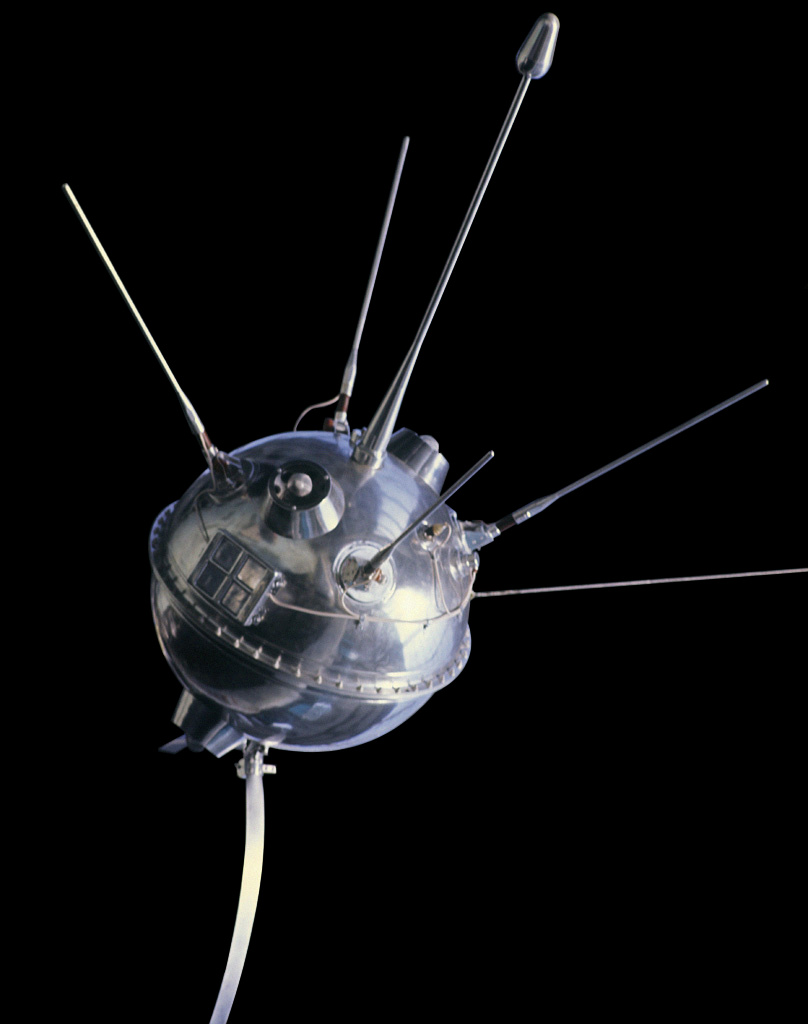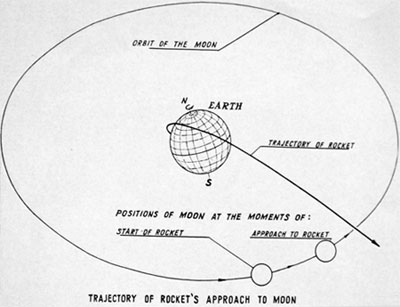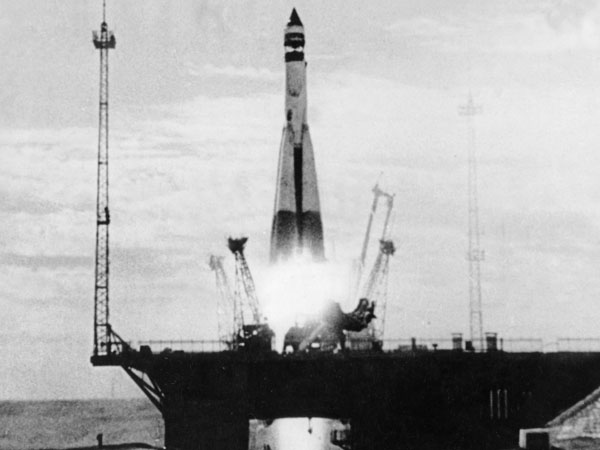
4 January 1959: At approximately 16:40 UTC, the Soviet automatic space probe First Cosmic Ship came within 5,995 kilometers (3,725 miles) of the Moon. It was the first man-made craft to arrive in the vicinity of Earth’s natural satellite.
First Cosmic Ship (which was later known as Мечта (Mechta, “Dream”) and today is called Luna 1) was launched from the Scientific-Research Test Range No. 5 at Tyuratam, Kazakhstan (later named the Baikonur Cosmodrome) at 16:41:21 UTC, 2 January 1959, aboard an 8K72 three-stage launch vehicle.
Mechta was the fourth in a series of lunar probes, and was intended to impact the surface of the Moon. It was spherical with several antennas, and weighed 361 kilograms (795.9 pounds). The probe carried a magnetometer, Geiger counter, scintillation detector and micrometeorite detector. It was powered by batteries. Radio telemetry equipment relayed the data to Earth.

It was intended that the spacecraft would impact the lunar surface, but an error in programming the third stage burn time caused a near miss. After 34 hours of flight, the probe passed within 5,995 kilometers (3,725 miles) of the lunar surface. It then entered a solar (heliocentric) orbit between Earth and Mars, where it remains today, circling the Sun every 450.0 days.
The Vostok-L 8K72 was a modified R-7 Semyorka intercontinental ballistic missile. The R-7 rocket was designed by Sergei Pavlovich Korolev, known as The Chief Designer.
The 8K72 version consisted of two core stages with four external boosters. The first stage and each of the boosters were powered by a four-nozzle RD-107 rocket engine burning kerosene and liquid oxygen. Total thrust was approximately 1,100,775 pounds. The second stage used a RD-0105 engine, producing 11,015 pounds of thrust. The Luna 1 was propelled by a third stage which remained attached during the translunar coast phase of flight.
The first two stages were 30.84 meters (101.18 feet) high and weighed 277,000 kilograms (610,680 pounds). The Luna 1 third stage weighed 1,472 kilograms (3,245 pounds), empty. It was 5.2 meters (17.06 feet) long with a diameter of 2.4 meters (7.87 feet).
The 8K72 rocket was capable of launching a 4,000 kilogram (8,818.5 pound) payload into Low Earth Orbit. The last launch of an 8K72 was in 1960, but the current Soyuz launchers are based on this early rocket.
Luna 1 was the first space vehicle to reach escape velocity and leave Earth’s gravitational field; the first to reach the vicinity of the Moon, and the first man-made device to orbit the Sun.

© 2019, Bryan R. Swopes